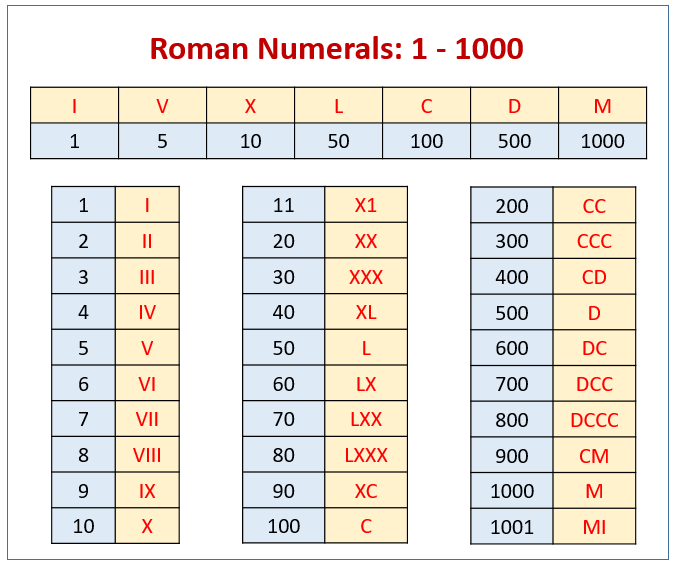

This cookie is set by GDPR Cookie Consent plugin. The cookie is set by GDPR cookie consent to record the user consent for the cookies in the category "Functional". The cookie is used to store the user consent for the cookies in the category "Analytics". These cookies ensure basic functionalities and security features of the website, anonymously. Necessary cookies are absolutely essential for the website to function properly. Numerical prefixes are used to specify the number of atoms in a molecule.
#11 in roman numerals plus#
Molecular compounds are named with the first element first and then the second element by using the stem of the element name plus the suffix -ide. When writing a chemical name what is written first?Ī molecular compound is usually composed of two or more nonmetal elements. Exception: when the compound contains oxygen and a halogen, the name of the halogen is the first word in the name. The element with the lower group number is written first in the name the element with the higher group number is written second in the name. How do you know which element to put first in the name? The first method is the traditional balancing method and the second one is the algebraic balancing method. Two quick and easy methods of balancing a chemical equation are discussed in this article. What are 2 methods for writing a balanced formula? The prefix ‘mono’ is only used on the second non-metal in the chemical formula. Place prefixes in front of each element based on the number of atoms present. Change the ending of the second element to ide. Rules for Naming Molecular Compounds Write the name for both elements. What are the three rules for naming compounds? When an element forms two oxyanions, the one with less oxygen is given a name ending in -ite and the one with more oxygen is given a name that ends in -ate. ite and -ate Some polyatomic anions contain oxygen. NO2 and NO3 are known as Nitrite and Nitrate respectively. The -ite would be used for the ion with the smaller. ate is used for the ion that has the largest number of Oxygen atoms. ate and -ite are commonly used for polyatomic ions of Oxygen. How do you know if it ends in ate or ite? In this case, beryllium, Be, is located in group 2, so you don’t need to use a Roman numeral. Roman numerals are only used for ionic compounds formed with metals that do not belong to group 1 or group 2 of the periodic table. Why do metals in Group 1 and 2 not need a Roman numeral? Use the total charge on the non-metal (or polyatomic ion) find the charge on the transition metal.Write the name and charge for the non-metal.Write the name of transition metal as shown on the Periodic Table.How do you write the chemical formula for transition elements? The reactants and products are separated by an arrow pointing toward the products. The correct formulas of the products are always written on the right side of the equation. The correct formulas of the reactants are always written on the left side of the equation. When naming the cation within an ionic compound, we don’t include the word ion or the charge unless it is a polyvalent cation.įerrous ion | Fe+2 – PubChem. When writing chemical formulas which always goes first the anion or cation?Īlways name the cation before the anion in the chemical formula, the cation will always appear first as well.

Molecular compounds can form compounds with different ratios of their elements, so prefixes are used to specify the numbers of atoms of each element in a molecule of the compound. When should you use prefixes in chemistry? The transition metals below do not need a Roman numeral in the names of their compounds because they only form one ion.

For example, Fe forms Fe2+ or Fe3+ ions in compounds. Transition metals that do not require Roman numerals Roman numerals are only used for transition metals that have more than one ion. How do you write formulas in Roman numerals? In chemistry, iron(III) refers to the element iron in its +3 oxidation state.


 0 kommentar(er)
0 kommentar(er)
